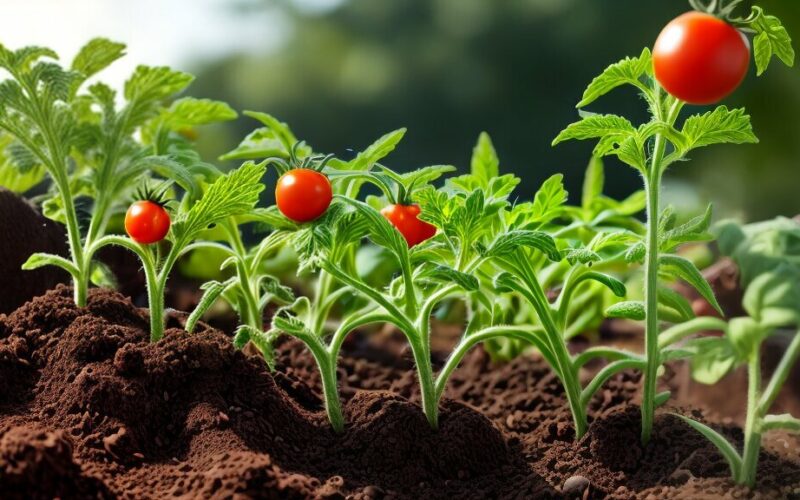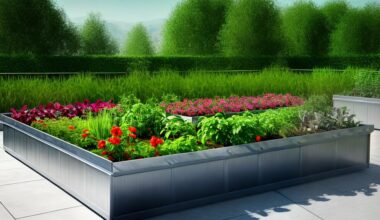Have you ever wondered if you can plant tomatoes and carrots together in your garden? The good news is that these two vegetables can indeed be planted together. In fact, planting tomatoes and carrots together can provide mutual benefits and minimize space requirements.
Before we dive into the details of companion planting tomatoes and carrots, let’s first understand what companion planting is. Companion planting is the practice of planting different crops in close proximity to enhance growth, deter pests, and maximize space utilization. This agricultural technique has been used for centuries to promote sustainable gardening and increase crop yields.
So, can you plant tomatoes and carrots together? The answer is yes! Tomatoes and carrots have different root structures, which allows them to grow well together without competing for nutrients. In addition, carrots can act as a natural pest repellent, keeping pests away from your tomato plants.
Now that we’ve established that planting tomatoes and carrots together is possible and beneficial, let’s explore the details of how to do it successfully.
Key Takeaways:
- Companion planting is the practice of planting different crops in close proximity to enhance growth and deter pests.
- Tomatoes and carrots can be planted together and provide mutual benefits.
- Carrots can act as a natural pest repellent for tomato plants.
Companion Planting: Tomatoes and Carrots
Companion planting is a popular gardening technique that involves planting different crops within close proximity to enhance growth, repel pests, and maximize space utilization. Tomatoes and carrots are two vegetables that are often considered good companion plants due to their complementary characteristics.
Tomatoes have deep roots that make them adept at absorbing nutrients from the soil, while carrots have shallow roots that are less likely to compete for resources with other plants. Moreover, tomatoes release chemicals that can repel pests such as aphids, spider mites, and whiteflies. Conversely, carrots attract beneficial insects such as ladybugs and lacewings, which can help control pests.
By planting tomatoes and carrots in the same bed, you can save space and optimize your garden’s productivity. However, it’s essential to follow some best practices to ensure successful co-planting.
Companion Planting: Tomatoes and Carrots
| Benefits of Companion Planting Tomatoes and Carrots: |
|---|
| Enhanced growth and productivity |
| Better soil health and nutrient uptake |
| Reduced pest infestations |
| Maximized use of garden space |
By combining the benefits of tomatoes and carrots, you can enjoy a healthier and more abundant harvest. When planting tomatoes and carrots together, consider the following:
- Plant tomatoes in a location that receives full sun and has well-drained, fertile soil with a pH between 6.0-7.0.
- Plant carrot seeds about four to five inches apart and one-half inch deep in rows spaced approximately one foot apart.
- Add organic matter to the soil to improve soil structure and nutrient retention.
- Water thoroughly but avoid overwatering, which can cause root rot and other problems.
- Fertilize periodically with a balanced fertilizer to provide essential nutrients.
With the right care, you can enjoy a bountiful harvest of carrots and tomatoes while also improving the overall health of your garden ecosystem.
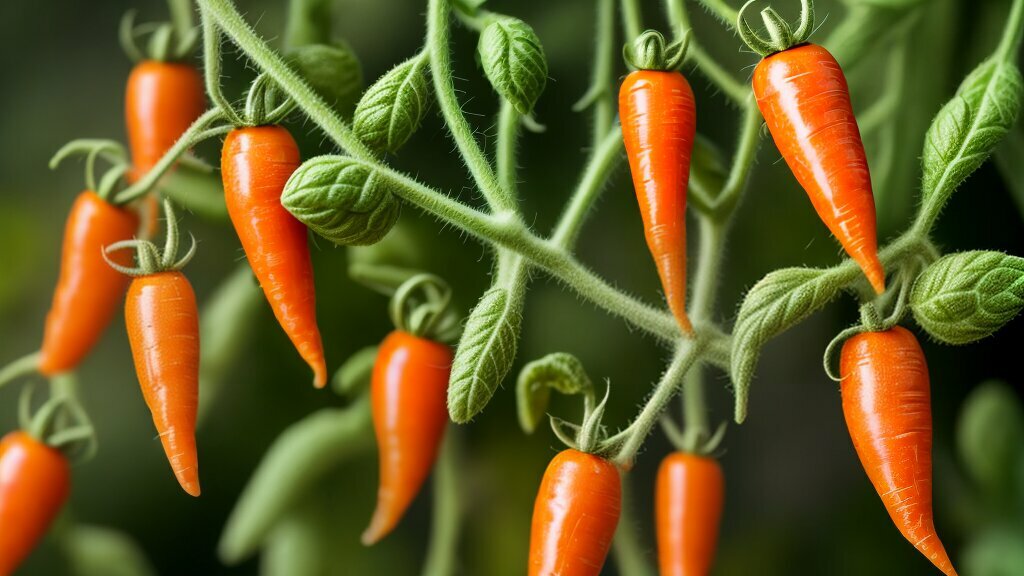
Planting Tomatoes and Carrots in the Same Bed
If you’ve decided to plant tomatoes and carrots in the same bed, there are a few things you should keep in mind to ensure optimal growth:
| Aspect | Tips |
|---|---|
| Soil preparation | Both tomatoes and carrots thrive in well-draining, nutrient-rich soil. Aim for a pH level between 6.0-7.0. Work in organic matter such as compost or aged manure before planting to improve soil fertility. |
| Spacing | Plant the tomatoes and carrots far enough apart to prevent competition for resources. A spacing of 2-3 feet between tomato plants and 3-4 inches between carrot plants is ideal. |
| Planting techniques | Plant the tomato seedlings deeper into the soil than they originally grew, burying part of the stem. This promotes a stronger root system. For carrots, sow the seeds directly into the soil and avoid overwatering. |
| Pest and disease management | Tomatoes and carrots can both be susceptible to similar pests and diseases, such as aphids and fungal infections. Keep an eye out for any signs of damage and take steps to prevent or treat it if necessary. |
Overall, planting tomatoes and carrots together can be a successful and beneficial practice with proper planning and maintenance. By following these tips, you can promote healthy growth and yield a bountiful harvest.
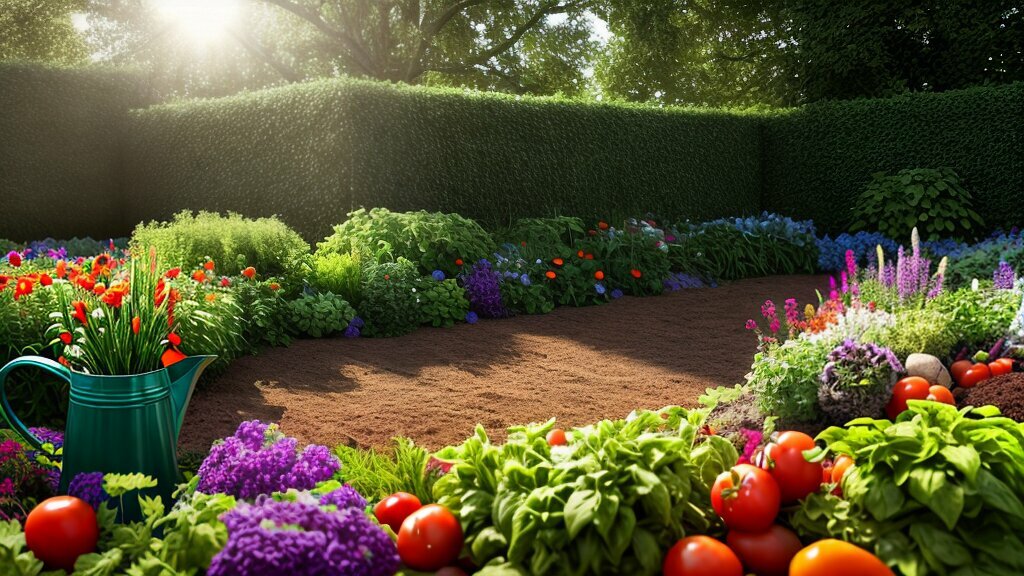
Growing Tomatoes and Carrots Together: Benefits and Challenges
Co-planting tomatoes and carrots can have several benefits for your garden. Tomatoes are heavy feeders and can deplete the soil of nutrients, while carrots are light feeders and can thrive in soil that is less nutrient-rich. Planting them together can balance the soil composition and enhance the growth of both plants. Additionally, carrots can act as a natural mulch for tomatoes and protect their roots from sunscald.
However, growing tomatoes and carrots together can also present some challenges. Both plants require regular watering, but tomatoes need a consistent water supply while carrots prefer well-drained soil to prevent rot. Thus, finding a watering technique that satisfies the needs of both plants can be tricky. Furthermore, tomatoes and carrots are susceptible to some of the same pests and diseases, such as aphids and root rot. Therefore, proper pest management and disease prevention should be a top priority.

To avoid any issues and make the most of co-planting tomatoes and carrots, it’s important to select the right cultivars that are compatible with each other. Crop rotation is another critical factor that should be taken into account, as planting the same crops in the same spot repeatedly can lead to soil-borne diseases and reduce the overall yield.
How to Grow Tomatoes and Carrots Together
Growing tomatoes and carrots together can be a great way to maximize space in your garden and improve the health of both plants. Here are some best practices to follow:
Soil Preparation
Prepare your soil well in advance of planting by removing any weeds and debris. Test your soil’s pH and adjust it to between 6.0 and 7.0, which is ideal for both tomatoes and carrots. Mix in plenty of organic matter such as compost and well-rotted manure to improve the soil’s fertility and texture.
Planting Techniques
Plant your tomato seedlings and carrot seeds deeply, ensuring that the roots are well covered with soil. Space your plants according to their specific needs, with tomatoes usually requiring about two feet of space between plants and carrots about four inches. Consider using trellises or cages to support your tomato plants.
Watering and Fertilization
Water your plants frequently to keep the soil moist but not waterlogged. Tomatoes require about an inch of water per week, while carrots need slightly less. Fertilize your plants regularly with a balanced, all-purpose fertilizer to promote healthy growth.
Maintenance
Regularly check your plants for signs of pests and diseases, and take action as necessary. Remove any yellowing or damaged leaves promptly. As your plants grow, prune the lower leaves of your tomato plants to improve air circulation and reduce the risk of disease.
Remember, it’s important to monitor your plants closely and make adjustments as necessary to ensure optimal growth and health. By following these best practices, you can enjoy a plentiful harvest of tomatoes and carrots from your garden.
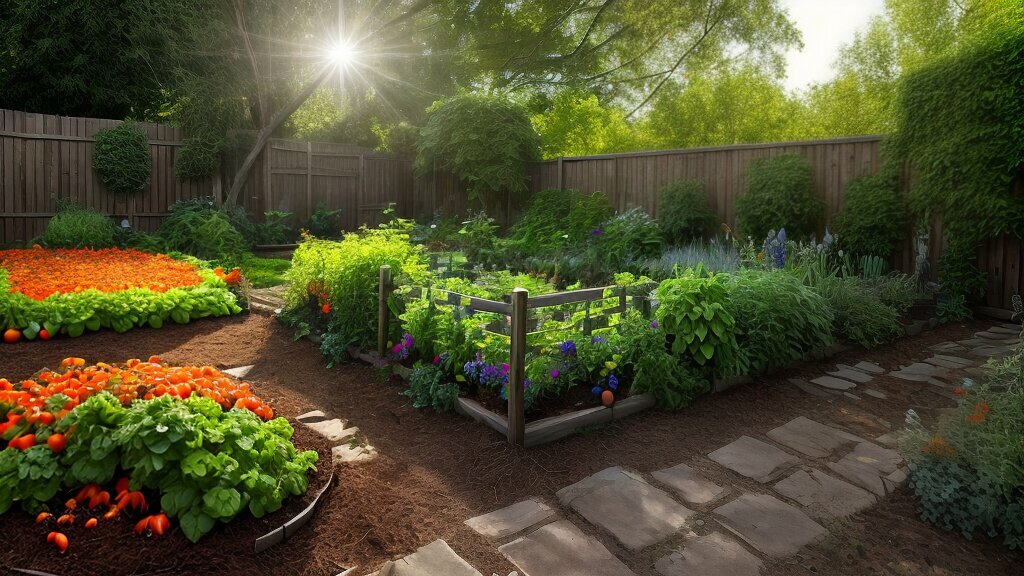
Tomatoes and Carrots Companion Planting Guide
Companion planting can benefit your garden in many ways. Here is a guide specifically for planting tomatoes and carrots together:
| Companion Plants for Tomatoes | Companion Plants for Carrots |
|---|---|
| Basil | Beans |
| Parsley | Peas |
| Nasturtiums | Lettuce |
| Marigolds | Onions |
| Garlic | Chives |
These companion plants can help deter pests, improve soil conditions, and enhance growth.
However, there are also plants that should not be planted near tomatoes and carrots:
- Avoid planting tomatoes near fennel, cabbage, or corn.
- Avoid planting carrots near dill, parsley, or parsnips.
Remember to rotate crops every season to prevent soil-borne diseases and to maintain soil fertility.
Planting tomatoes and carrots together can be a great way to improve your garden productivity and create a beautiful and harmonious environment. Use this guide to optimize your companion planting experience!
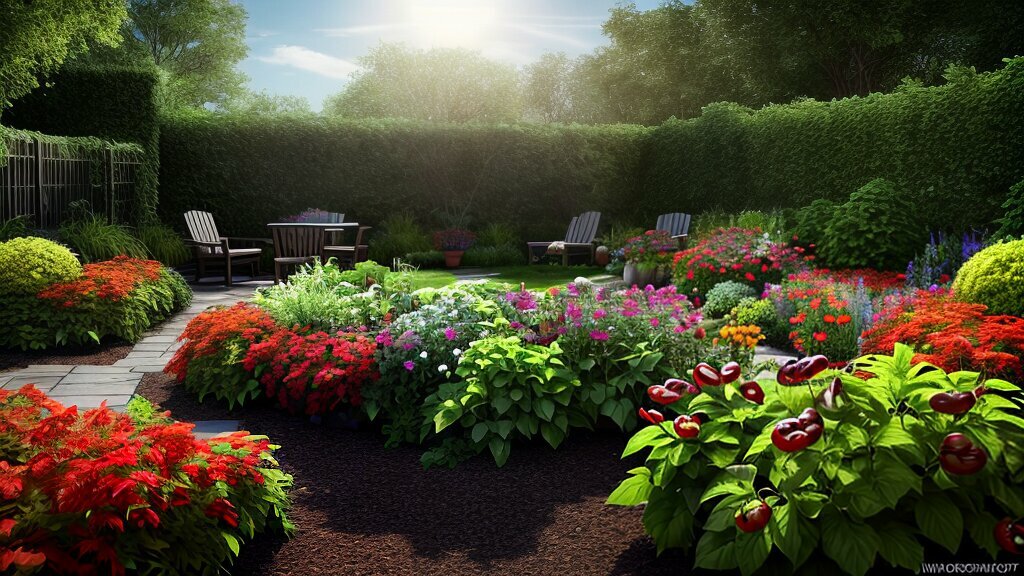
Conclusion
As you can see, planting tomatoes and carrots together can be a great way to maximize your garden space and enhance the growth and quality of both crops. By practicing companion planting and following the tips and best practices outlined in this article, you can successfully grow these vegetables side by side.
Remember to choose the right soil conditions, give your plants enough space, and manage pests and diseases effectively. With patience and care, you can enjoy a bountiful harvest of fresh, flavorful tomatoes and carrots from your own backyard.

